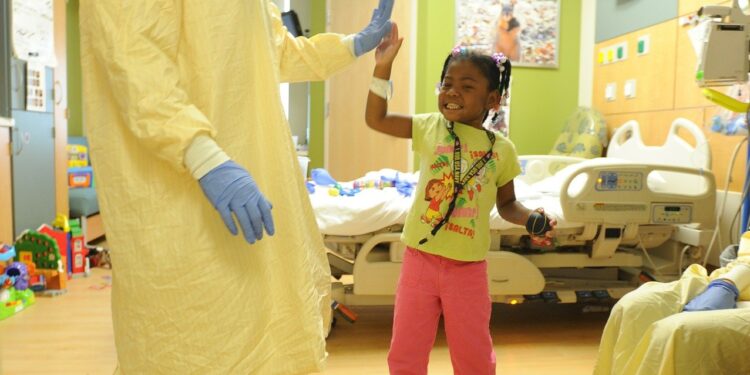Credit: CC0 Public Domain
Pediatric sepsis, a major inflammatory response to trauma that can lead to organ failure and tissue death, kills an estimated 3.3 million children worldwide each year. Excessive and catastrophic responses to infection or injury often hit resource-poor clinics hardest.
In January, the diagnostic criteria for sepsis in children were updated for the first time in two decades when an international research team led by the University of Colorado Anschutz Medical Campus unveiled a new data-driven diagnostic system. The modernized criteria, based on numerical scores of organ dysfunction, showed improved diagnostic performance compared with previous criteria for pediatric sepsis, which were primarily based on the inflammatory response.
The work is published in the journal JAMIA Open.
The new Phoenix criteria, led by Tell Bennett, MD, MS, professor of biomedical informatics and pediatric critical care at the University of Colorado School of Medicine, mark a significant shift in the definition of pediatric sepsis, and they are useful in all types of health care settings around the world.
“That was the overall goal: to get diagnostic criteria for pediatric sepsis that are consistent with the adult definition of life-threatening organ dysfunction and that are also applicable worldwide,” said Peter DeWitt, Ph.D., research assistant professor in the Department of Biomedical Informatics.
To create the diagnostic scoring system, the research team collected data from 10 hospitals, including in the United States, Bangladesh, China, Colombia and Kenya. The CU Anschutz research team of DeWitt, research assistant professor Seth Russell, MS, and research program manager Meg Rebull worked in collaboration with the Society for Critical Care Medicine (SCCM).
The tools provide precise information for research
The next step was to provide researchers around the world with the means to apply the Phoenix criteria to electronic medical record data without having to implement the criteria themselves. DeWitt said using the tools — an R package and a Python module — will allow researchers to calculate an accurate and consistent pediatric sepsis score. He is the first author of the paper on the new tools.
DeWitt said he created the tools “to give us a way to make sure that if someone says, ‘Based on this patient’s record, they have sepsis,’ that shows that yes, they do. We can be confident in the accuracy of that diagnosis rather than asking, ‘Are you sure?’ … We know that if this tool is used, then we can trust those findings in research. It will give us a good basis for comparing results, not only within published papers, but across published papers.”
Collecting child-specific data was critical to the project because sepsis and septic shock, as well as many other conditions, manifest differently in children, DeWitt said. When creating the Phoenix criteria, “we needed to get a lot of samples and a very large data set,” DeWitt said.
“It was the hard work of Tell Bennett, Nelson (Sanchez-Pinto, MD, MBI, FAMIA of Lurie Children’s Hospital Chicago) and the SCCM working group that made this possible. We were able to get interested shareholders to participate and provide us with data from around the world,” DeWitt said. “We ended up with over 3 million (patient) encounters in our data set.”
Importantly, the two freely available tools (the R package and the Python module) will reduce errors in research and provide a common implementation for diverse research groups, across multiple data formats and programming paradigms.
While the tools are intended for researchers, the CU Anschutz team is also collaborating with a Canadian research team on a tool that will allow clinicians to diagnose pediatric patients with sepsis at the bedside.
This is the next step needed to get children at high risk of developing sepsis diagnosed quickly, DeWitt said. “Then two different lines of research can go from there: on interventions that reduce mortality and harm, and on interventions that improve patient outcomes.”
More information:
Peter E DeWitt et al, phoenix: an R package and Python module for calculating the Phoenix pediatric sepsis score and criteria, JAMIA Open (2024). DOI: 10.1093/jamiaopen/ooae066
Provided by CU Anschutz Medical Campus
Quote:Freely available tools improve accuracy of pediatric sepsis diagnosis (2024, September 24) retrieved September 24, 2024 from
This document is subject to copyright. Apart from any fair dealing for the purpose of private study or research, no part may be reproduced without written permission. The content is provided for informational purposes only.



